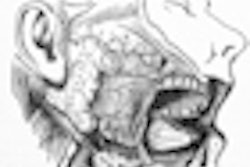Salivary metabolomes -- the complete set of small-molecule metabolites, such as hormones and other signaling molecules, found in a biological sample -- can aid in the detection of oral cancer squamous cell carcinoma (OSCC), according to a study in the International Journal of Cancer (December 28, 2010).
Researchers from Shanghai Jiao Tong University School of Medicine conducted saliva metabolite profiling on a group of 37 OSCC patients, 32 oral leukoplakia patients, and 34 healthy subjects using ultraperformance liquid chromatography, quadrupole/time-of-flight mass spectrometry, and multivariate statistical analysis. The three groups demonstrate characteristic salivary metabolic signatures, the researchers noted.
They selected a panel of five salivary metabolites: γ-aminobutyric acid (GABA), phenylalanine, valine, n-eicosanoic acid, and lactic acid. The predictive power of each was evaluated using receiver operating characteristic curves for OSCC.
They found that a combination of valine, lactic acid, and phenylalanine yielded satisfactory accuracy (0.89, 0.97), sensitivity (86.5%, 94.6%), specificity (82.4%, 84.4%), and positive predictive value (81.6%, 87.5%) in distinguishing OSCC from the controls or oral leukoplakia, respectively.
"The utility of salivary metabolome diagnostics for oral cancer is successfully demonstrated in this study, and these results suggest that metabolomics approach complements the clinical detection of OSCC and stratifies the two types of lesions, leading to an improved disease diagnosis and prognosis," the researchers concluded.
Copyright © 2011 DrBicuspid.com



















